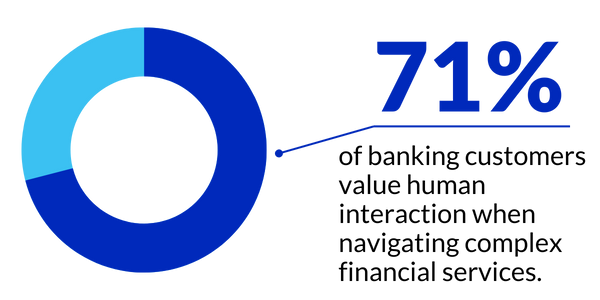The only clear trend at this time is that economic uncertainty is expected to remain a constant for the next several years, thereby setting the stage for a surge in small business loans.
As larger corporations delay growth plans while they wait for the global economy to stabilize and as the labor market continues to be in turmoil with government layoffs and corporate hiring freezes while threats of trade wars remain high, local businesses and startups are best positioned to take advantage of small business lending programs created by banks and credit unions to service this vibrant segment of the U.S. economy.
Why Small Business Loans Are Anticipated to be on the Rise
The current economic landscape is creating the perfect storm for an increase in small business lending. Here’s why:
- Laid-Off or Fed-Up Workers Becoming Entrepreneurs – Economic instability caused by inflation, tariffs, job insecurity and other macroeconomic pressures, as well as the forced downsizing of the federal government and hiring freezes pending the resolution of looming trade problems, will lead to significant layoffs and voluntary resignations. Moreover, Millennial and Gen Z employees see traditional employment as increasingly stifling and undesirable. As these traditional employment options shrink, many of these displaced and/or disgruntled workers are now turning to entrepreneurship. As a result, we are seeing the continuance of a trend where such disregarded and/or disaffected workers move into self-employment opportunities such as consulting contracts, freelance opportunities, and start-up ventures to find financial and personal independence.
- New and Existing Small Businesses Need Capital – Changing economic conditions drive start-up and established small businesses to seek capital funding to cover increased operational costs, take advantage of opportunities to expand into new or underserved local markets, or invest in new or updated technology. These small businesses hold an advantage over larger, more established companies in that the former have more modest, less complex capital needs and serve localized markets that are more easily understood and underwritten by banks and credit unions.
- Large Corporations Are Slowing Down – While big businesses tighten their budgets and pull back on expansion as they try to understand the direction of what currently looks like a chaotic world economy, small businesses can move quickly into new or underserved local markets with unique or niche products to seize opportunities. This agility makes them an attractive and safer bet for community lenders such as local banks and credit unions.
A Prime Opportunity for Banks and Credit Unions
For financial institutions, small business loans offer a reliable revenue stream—especially during volatile times. Here’s why they stand out:
- Government-Backed Security – Many small business loans, such as SBA loans, come with federal backing, reducing risk for lenders.
- Diverse Loan Portfolio – A strong small business lending portfolio helps diversify risk, especially when traditional commercial lending markets face uncertainty and offer more risk.
- Community Impact & Relationship Building – Supporting small businesses strengthens local economies and fosters long-term customer and community relationships.
How Lenders Can Capitalize on the Surge
To make the most of this opportunity, lenders must ensure they have efficient, scalable, and compliant processes in place. This includes:
- Streamlining Documentation – Fast, accurate and highly flexible loan documentation is essential to keep up with demand and avoid bottlenecks in the lending process.
- Ensuring Compliance – With laws and regulations shifting at both state and federal levels, lenders need adaptable solutions remain compliant at all times despite these continuous changes.
- Investing in Digital Solutions – Automated loan origination platforms, AI-powered underwriting tools, and integrated and fully-automated document generation technology can help process loans efficiently, rapidly and ccurately.
- Enhancing Customer Experience – Offering a seamless, digital-first loan application process will help attract and retain borrowers. Mobile-friendly platforms and e-signature capabilities can drastically reduce approval times.
SBA Lending in a Downturn: Pitfalls to Watch For
While SBA loans present an incredible opportunity in a volatile economy, lenders must be strategic and cautious to avoid common missteps that can undermine portfolio performance.
- Overreliance on Government Guarantees – Although SBA loans are partially guaranteed by the federal government, that guarantee does not eliminate risk entirely. Defaults still impact a lender’s bottom line through recovery delays, servicing burdens, and reputational risk. Lenders should treat SBA loans with the same level of scrutiny and rigor as conventional loans.
- Inadequate Financial Vetting of Borrowers – In a downturn, many small business owners face declining revenues, unstable cash flows, or declining collateral values. Historical financials may not tell the full story. Lenders should request detailed month-over-month financials for the trailing 12 months, assess real-time cash flow, require third-party valuations of collateral assets, and evaluate borrower contingency plans to withstand prolonged economic strain.
- Misjudging Business Resilience – Not all small businesses are equally equipped to weather economic turbulence. Industries like hospitality, retail, and early-stage startups may be disproportionately affected by business disruptions. Risk-tiering borrowers by sector and requiring additional due diligence, such as business continuity plans or updated market and demographic forecasts, can help identify higher-risk profiles.
- Ignoring Early Warning Signs of Distress – Rising delinquency rates in the SBA portfolio are a warning sign. Lenders should proactively monitor loan performance and implement early intervention strategies, such as careful review of regular financial reporting, strict covenant testing and borrower check-ins. Look for red flags such as missed payments, reduced headcount, or delayed vendor payments.
- Compliance Blind Spots – SBA lending comes with specific requirements for eligibility, use of funds, and documentation. During periods of high loan volume, it’s easy to let compliance slip. A missed form or incorrect certification can jeopardize the SBA guarantee. Investing in document automation and audit-ready systems is critical for staying compliant without slowing down the loan process.
- Operational Strain from Increased Demand – A surge in applications can overwhelm internal teams, especially if manual processes are still in place. Under-resourced loan ops teams may rush approvals, overlook red flags, or delay closings. Scaling with digital tools ensures accuracy, consistency, and speed, even under pressure.
GoDocs: Helping Lenders Stay Ahead
At GoDocs, we equip lenders with automated, attorney-level loan documentation solutions designed to handle the complexities of small business lending. Our platform ensures compliance, speeds up loan processing, and reduces operational costs—helping banks and credit unions navigate this surge in demand with ease.
The next 15 months will be a defining period for small business lending. Financial institutions that embrace efficiency and compliance will not only mitigate risk but also position themselves as go-to lenders in a thriving market.
Want to learn more about how GoDocs can support your SBA 7(a), 504, and Express Loans strategy? Let’s talk!
We use these insights to benchmark commercial lending trends and deliver more relevant resources. See how we protect your data in our Privacy Policy.
Head of Business Strategies & Partnerships








